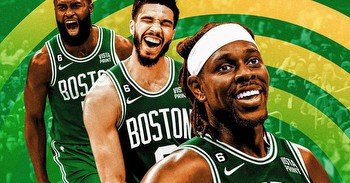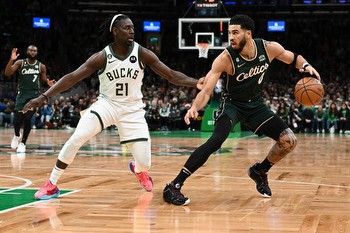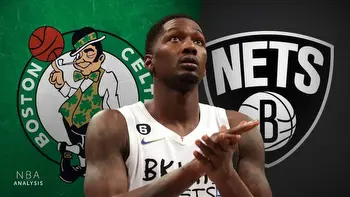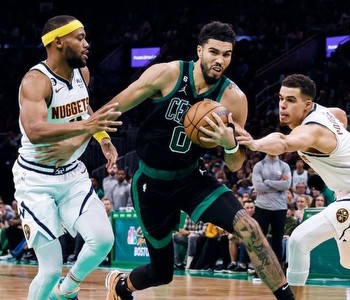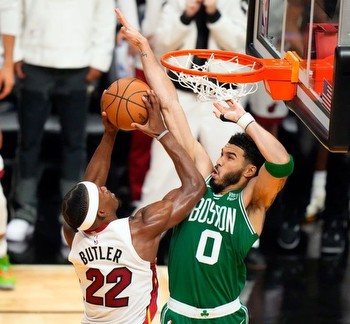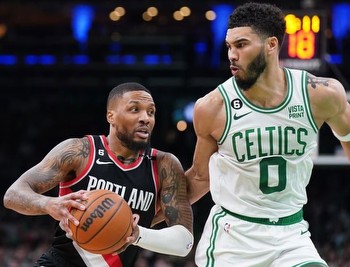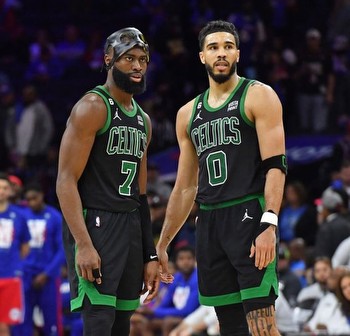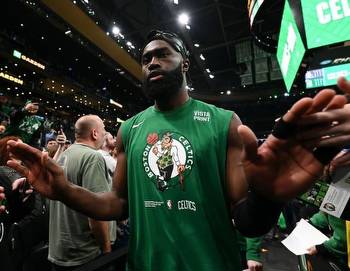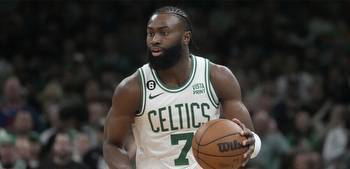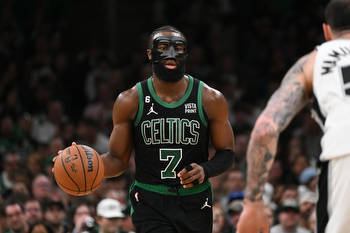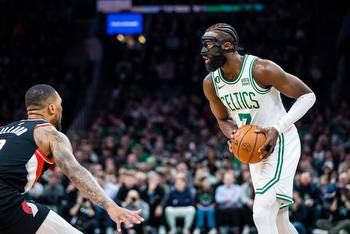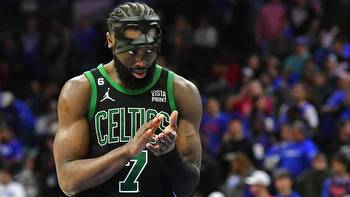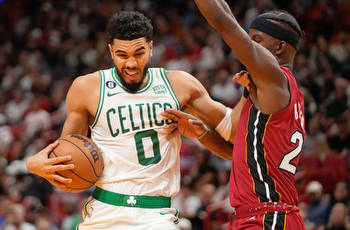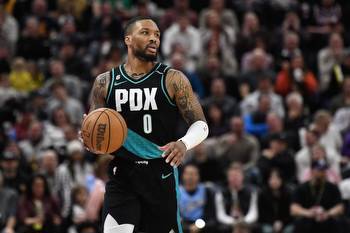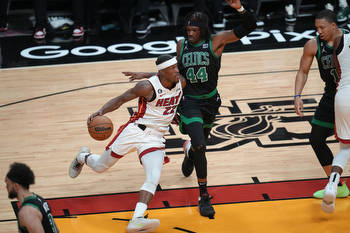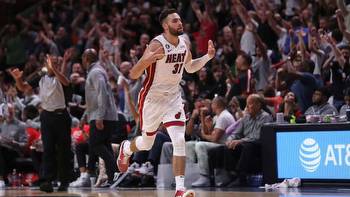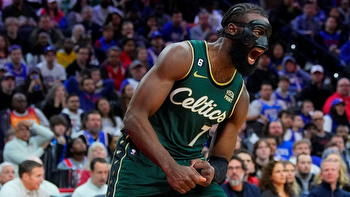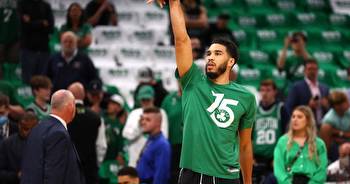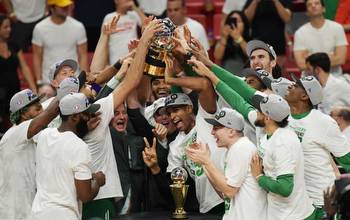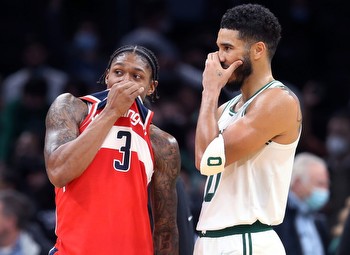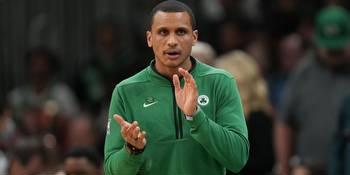Jaylen Brown’s Historic Supermax Is a Champagne Problem
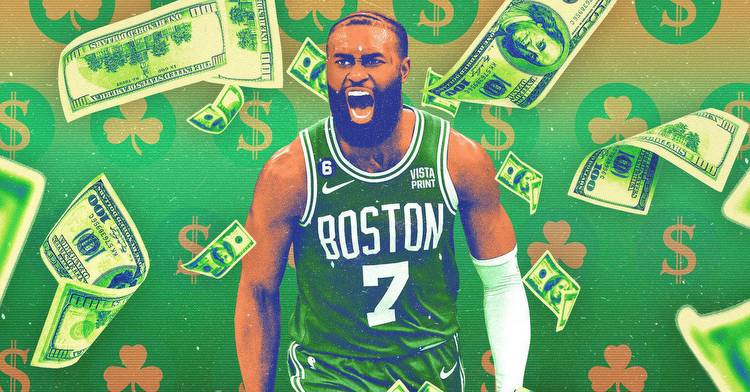
The Boston Celtics had no better option than to extend Jaylen Brown for a projected $304 million over the next five seasons. Here’s how his historic supermax could break down year by year:
2024-25: $52.4 million
2025-26: $56.6 million
2026-27: $60.8 million
2027-28: $64.9 million
2028-29: $69.1 million
It’s certainly a risk to give the richest contract in NBA history to a secondary option who isn’t even a perfect complement to Boston’s best player, Jayson Tatum. But what were the Celtics supposed to do? Play hardball, piss him off, and let him walk? By extending Brown now, the Celtics will roll out a retooled championship contender this season while maintaining some options down the line.
There was no potential trade involving Brown this summer that would have improved Boston’s title chances, so there’s more value in extending the 26-year-old than leaving him as a disgruntled upcoming unrestricted free agent. Now, if things sour next season, the Celtics can always take a page from their old playbook and shop Brown for true superstars like they reportedly did in years prior for Anthony Davis, Kawhi Leonard, and Kevin Durant.
The likelihood that Brown will stay with the Celtics for the duration of this contract will depend on the team’s success. A championship in the next year or two, or at least a run to the Finals, would likely keep the Tatum-Brown core rolling. Even though the Jays haven’t won it all yet, they’ve been to six straight playoffs in their six seasons together, including four trips to the Eastern Conference finals (and Brown had a fifth while Tatum was still in college). Committing to them long term is a no-brainer considering the lack of preferable paths, and this summer, president of basketball ops Brad Stevens made other smart moves to improve this team.
After reshaping the roster and coaching staff this summer, the Celtics are now the betting favorites to win the Finals, per FanDuel Sportsbook. And they’re my current pick to represent the East in the Finals. The Bucks might look good on paper, but they have a rookie head coach, Khris Middleton still needs to return to form, and Brook Lopez is entering his 16th season. The Sixers? Who knows what their roster will look like in the wake of James Harden’s trade demand. The Cavs? Prove it. And though the Heat might upgrade by acquiring Damian Lillard, their roster feels shallow following the loss of two key role players and would be further depleted by a superstar trade.
The Celtics have a clear top-seven rotation with Tatum and Brown leading the way. Robert Williams III and Al Horford will serve as the primary bigs alongside the newly acquired Kristaps Porzingis, who offers rim protection, shooting, and an expanded offensive game. All three have had injury concerns in the past, but if at least two of them can stay healthy, then the Celtics will have more flexibility in the frontcourt than almost any other team. Tatum and Brown can flank them on the wing or even slide up to play the 4 in smaller lineups. And while Marcus Smart is now in Memphis, the steady Malcolm Brogdon and Derrick White will lead the backcourt.
Using those seven players, the Celtics can play five-out on offense without sacrificing size or rim protection on defense. There are multiple sources of shot creation. Most of their players can thrive without the ball, too. And there are solid young pieces like Payton Pritchard, Jordan Walsh, and Oshae Brissett who can fill the regular-season rotation and earn deep bench minutes in the playoffs.
Celtics head coach Joe Mazzulla struggled to pull the right strings as a rookie last season, and there are no guarantees he will improve. But Boston added some highly respected veterans to the staff, including Sam Cassell and Charles Lee, two potential future head coaches. On paper, Mazzulla has a better overall staff that could help maximize the roster’s upside.
That said, Brown’s play could be the swing factor for the Celtics’ season, particularly if they face the Heat in the East finals for a third consecutive season. Brown averaged 24.1 points on 60.2 percent true shooting in 2022 against the Heat, helping the Celtics advance, only to average 19 points on 46.4 percent true shooting in 2023’s defeat. Brown’s shot suffered this May due to a hand injury, but he was also a walking turnover with his shaky handle.
Shot creation is the area in which Brown has his most glaring limitations due to his aforementioned handle. But it’s also one of the areas he has improved the most in since entering the league as a stiff, robotic rookie. Ever since his second season, when he first began to emerge as a scorer, his efficiency has slowly been on the rise:
Despite Brown’s progress, he still has his weaknesses, which infamously flared up against the Warriors in the 2022 Finals and then against the Heat this spring. That’s partially why his extension feels like such an overpay at first blush. But Brown will turn only 27 next season, and in the modern age, players are staying more durable into their mid-30s. Plus, he could continue to make improvements just like he has throughout his career.
There is certainly a chance, though, that Brown has plateaued and reached his limits as a ball handler, as a basic playmaker, as an inconsistent shooter, and as a spacey off-ball defender with no lockdown ability. Brown’s shooting is probably an even more pressing concern than his handling. Last season, he made just 35.8 percent of catch-and-shoot 3s. In 2022-21, he drilled 43.8 percent of them.
Brown needs to shoot better to maximize his value as an off-ball player in Boston’s diverse offense. The Celtics are betting that he will by giving him a contract worth almost double what Jerami Grant signed for this summer and nearly three times what Kyle Kuzma got annually. Brown is better than them, but if Boston falls short of expectations once again in the playoffs, it could be harder to move him for pieces since a receiving team would also understand his limitations (and have to absorb a trade kicker).
Brown will earn $304 million over the next five seasons starting in 2024-25 if the salary cap rises by the maximum potential amount of 10 percent. If the cap rises by only 5 percent, then his total salary could end up closer to $290 million. (Chump change to Kylian Mbappé!) For future stars signing supermaxes, their salaries will continue to inflate as the cap rises. The salary cap will be $136 million this season. If the cap goes up by 10 percent each season, it could be $219 million for 2028-29, meaning Brown’s deal would count for only 31.5 percent against the salary cap. By 2028-29, will his $69 million seem like a nice number for a player of his caliber? Or will he seem like the NBA’s new Tobias Harris?
Under the new collective bargaining agreement, the supermax is creating team-building problems that could cause some franchises to crumble in the years to come. Starting in 2024-25, teams operating over the second apron, like the Celtics, won’t be able to use the midlevel exception or sign buyout players off the market. They won’t be able to take in more money than they send out in trades, either. Minimum contracts and picks will be the only real avenues to make deals. Luxury tax penalties will be significant as well, making it too expensive for many franchises to maintain contending rosters.
The Celtics have another mammoth contract extension looming with Tatum in the summer of 2025. But having two expensive, young superstars? That’s a champagne problem. The Celtics have an ownership crew willing to spend, unlike other cheapo owners whose only goal is to make a profit. The Celtics may run into challenges in two years, but financial nightmares are a concern for down the line. Extending Brown is the best way for Boston to reach its only goal today: hang banner 18.

